The origin of the asteroid belt: we may be all wrong!
In the Milky Way , dusty and cold molecular clouds -about ten degrees above the absolute zero -revolve around the central bulb and enter the spiral arms from time to time, where the medium is denser. Shock waves then occur, sometimes causing their gravitational collapse , which compresses them, causing their temperature to rise. Some regions of these clouds become very dense and are entrained in a rotational motion with a centrifugal force which opposes the gravitational contraction perpendicularly to this axis of rotation, which causes the flattening of the clouds.
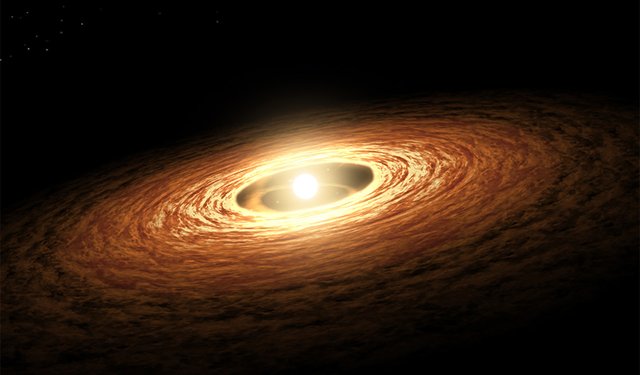
Proto - stars are then born, and surround themselves with a protoplanetary disk where temperatures can exceed a few thousand degrees towards the center of the disk while they are colder at greater distances. Dust will sediment as the disc cools and the gas condenses. The thermal gradient thus imposes on the disk a chemical gradient. The bodies which will begin to grow by condensation and accretion of material to the nearest to the Sun will therefore contain essentially metallic oxides and refractory silicates: this is where rocky planets will be born . Further, they are frozen particles that will form nuclei attracting large amounts of gas. We will then have gaseous giants , like Jupiter and Saturn , and farther still giants with hearts of ice like Uranus and Neptune .
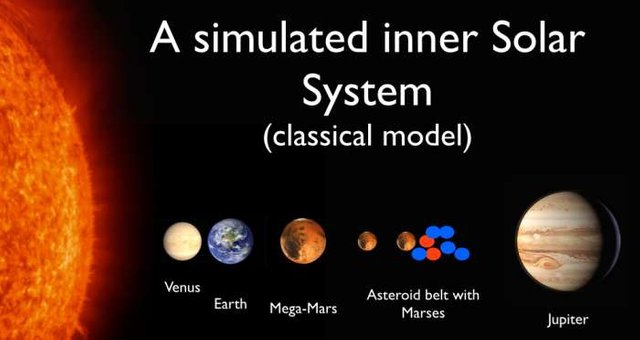
The most studied numerical simulations of the formation of the planets of the solar system generally predict the formation of a mega-Mars, of mass comparable to the Earth or Venus, and mini-Mars in place of the asteroid belt. ©
The Cosmogony of the Solar System and the Asteroid Belt
This cosmogonic scenario in the main lines is probably worth at least for our solar system . Observations of the telescopes , such as Hubble , Spitzer, and Herschel , to name but a few, suggest that it is also true for many of the planetary systems in formation that have been identified. It is also supported by numerical simulations and data from the study of meteorites and asteroids in our Solar System.
However, despite all these successes, even around the Sun, there remain many problems whose solutions are not known satisfactorily even though we have some ideas, for example the barriers of magnetic field, rotation and meter . There is the problem of the size of Mars: it seems too small and too massive. The numerical models fed observational data would indeed think that Mars should be of a comparable size to that of the Earth and several small planets should occupy the area of the main asteroid belt .
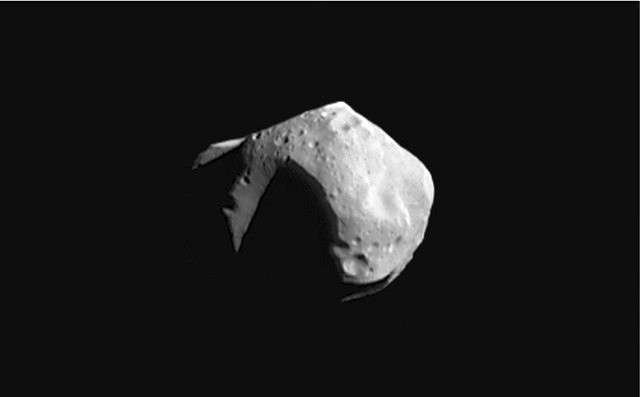
253 Matilde is a type C asteroid. ©
A strangely empty belt and Mars too small
This belt, contrary to what the cinema and certain documentaries make believe, is rather empty. The distances between its objects are very large. As for its origin, it does not reside, as we have long thought, in a destructive collision between two planets: this belt contains only about one thousandth of the mass of the Earth.
The current scenario is that of a planet that could not be formed. The planetesimals (bodies from 1 to 100 km) could not merge due to the presence of the massive Jupiter, which would have formed faster than the rocky planets. Its gravitational field would have inhibited this growth and depopulated the region of the asteroid belt . A planetary migration scenario, the Grand Tack , would also help explain the small size of Mars and the absence of other planets in the asteroid belt.
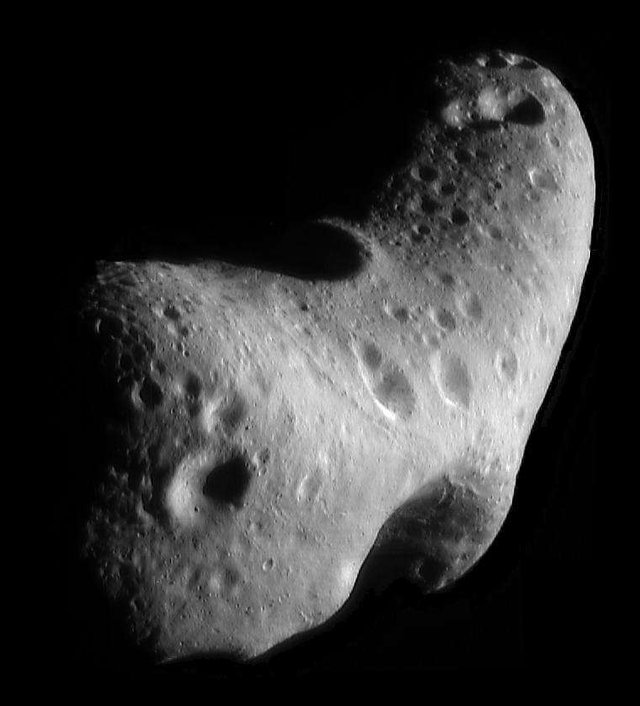
Eros is an S-type asteroid. ©
The asteroid belt: a depopulated region ...
However, these explanations are not entirely satisfactory, in particular because in recent years it has become increasingly evident that the small bodies of this belt are mineralogically very diverse. For the most part, they would not have been born there but would come from different regions of the protoplanetary disk.
There are two distinct and dominant populations (see diagram below). Type C asteroids are the parents of meteorites called carbon chondrites . They should have formed in cold regions of the disc. Next come the type S asteroids, which are the parents of silicate meteorites. These seem to have an important content of olivine and pyroxene, as well as the peridotites of the mantle of the Earth. They would have formed rather near the Sun, where Mercury , Venus and Earth were born .
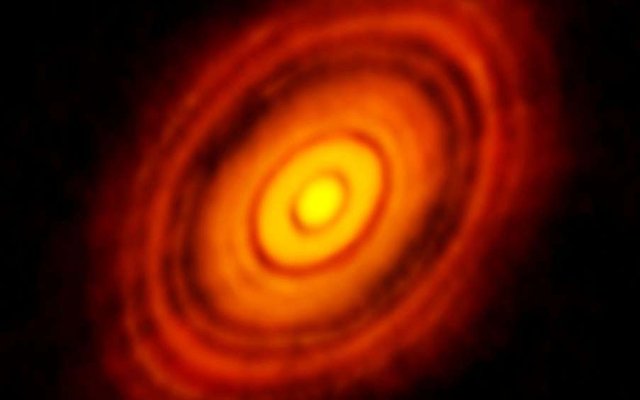
The most accurate picture ever made with Alma - more accurate than the images usually obtained in the visible with the Nasa-Esa Hubble Space Telescope. It shows the protoplanetary disc surrounding the young star HL Tauri. These new observations of Alma reveal structures in the disk never observed before and even reveal the possible locations of planets in formation in the dark zones at the heart of the system. ©
How to explain this amazing mix ? With his colleague Andre Izidoro, astronomer Sean Raymond (from the Bordeaux Astrophysics Laboratory and one of the promoters of the Grand Tack scenario) has proposed a new revolutionary hypothesis in an article published in Science Advances .
Jupiter and its gravitational perturbations would not have depopulated the main asteroid belt. On the contrary, the gaseous giant would have injected asteroids into this region that was previously destitute. These asteroids would therefore be mainly migrants born elsewhere.
The observations made by the Alma radio telescope of the protoplanetary disk surrounding the young star HL Tauri give credit to this hypothesis as well as to numerical simulations. Dust drift and accelerated growth of planet embryos within the protoplanetary disc could result in highly dust-depleted rings. Few planetesimals would then take place and it is in this void that the asteroids of the main belt would have finally taken place at the beginning of its history.
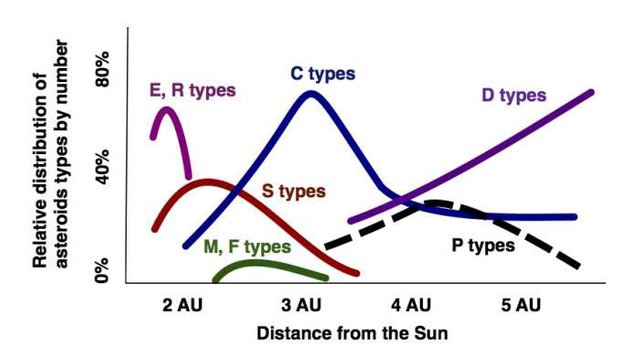
The proportions of the different types of asteroids in the main belt as a function of the distance to the Sun in an astronomical unit (UA), ie the distance from Earth to the Sun is about 150 million kilometers. ©
Sean Raymond and Andre Izidoro obtained an interesting result in support of their new scenario. The numerical simulations they conducted accurately account for the proportions of asteroids C and S in the main belt. On his blog , Sean Raymond is still cautious because it is finally possible to explain the small size of Mars and the structure of the asteroid belt as well with the model of the Grand Tack with one just with Andre Izidoro.
Each of these models has its weak points and its strengths. Work remains to be done. The tests capable of refuting these models, which might be false both, are still to be found. Finally, we should know more about the origin of water on Earth, part of which at least would have been provided by the accretion of planetesimals and asteroids.
Reference : futura-sciences.com
Hi,
This article seems to be translated from this original post in French. Citing his/her sources is very important, especially when writing about science. Moreover, Google-translating posts in other languages is something not encouraged on steemit. It would be better to write something on your own, possibly giving the link to the original article you liked and explaining why you liked it. This is known to attract better rewards. Thanks in advance for your consideration.
Thank you for your reply, yeah you're right but write with your own language is so hard especially with these topics.